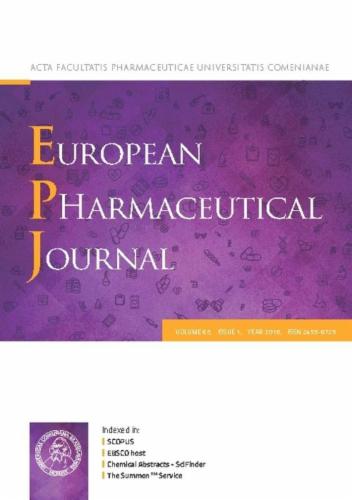转运蛋白表达是支持血脑屏障药物通透性体外体内外推的必要比例因子的一部分。
IF 4.3
3区 医学
Q1 PHARMACOLOGY & PHARMACY
引用次数: 0
摘要
药物进入中枢神经系统受到血脑屏障的限制,这反过来又影响药物的疗效/毒性。迄今为止,大多数药物发现优化模式都严重依赖于体外转运体分析和临床前物种药代动力学评估,以提供对人脑渗透的定性评估。由于缺乏人脑药代动力学数据,临床前物种的机制模型,结合体外和计算机数据,有助于转化为人类。这些模型需要在体外和体内系统中测量转运蛋白表达数据。这项工作的目的是量化转运蛋白的表达并生成比例因子(sf),以实现转运蛋白介导过程的体外体内外推(IVIVE),并支持大鼠脑PBPK模型的建立。SF表示组织中相关转运蛋白相对于表达转运蛋白的细胞的丰度之比。采用定量蛋白质组学和QconCAT技术,测定了人P-gp (ABCB1/ ABCB1)和BCRP/ BCRP (ABCG2/ ABCG2)在大鼠脑微血管、模拟细胞系和转染细胞系(Madin-Darby犬肾I (MDCK I)、Madin-Darby犬肾II (MDCK II)和猪肾上皮细胞(lc - pk1)中的表达。P-gp在大鼠脑微血管中的表达范围为32 ~ 71 pmol/mg,超过了文献中微血管蛋白14.1 ~ 25.2 pmol/mg的水平。相反,Bcrp的表达范围在0.02-0.27 pmol/mg之间,低于文献范围(2-6.2 pmol/mg)。P-gp在转染大鼠Mdr1a的MDCK I和LLC-PK1细胞中的表达与转染MDR1的LLC-PK1和MDCK II细胞中的人P-gp表达相似(在1.5倍之内)。脑P-gp的sf值分别为34.4和50.4(取决于所使用的细胞系),脑Bcrp的sf值分别为0.53。当使用跨物种共享的替代肽测量蛋白表达时,在MDCK II细胞系中检测到内源性P-gp转运蛋白。目前的工作为体外P-gp和bcrp相关药物动力学的蛋白质组学翻译提供了一个框架,并支持PBPK模型的发展,以预测药物在大脑中的处置。本文章由计算机程序翻译,如有差异,请以英文原文为准。

Transporter expressions as part of required scaling factor to support in vitro in vivo extrapolation for blood-brain barrier drug permeability
Access of drugs to the central nervous system is limited by the blood–brain barrier, and this in turn affects drug efficacy/toxicity. To date, most drug discovery optimization paradigms have relied heavily on in vitro transporter assays and preclinical species pharmacokinetic evaluation to provide a qualitative assessment of human brain penetration. Because of the lack of human brain pharmacokinetic data, mechanistic models for preclinical species, combined with in vitro and in silico data, are useful for translation to human. These models require transporter expression data to be measured in both in vitro and in vivo systems. The purpose of this work was to quantify transporter expression and generate scaling factors (SFs) to enable in vitro in vivo extrapolation (IVIVE) of transporter-mediated processes and to support the development of PBPK model of the brain in rats. SF represents the ratio of abundance of the relevant transporter in the tissue relative to transporter expressing cells. Using quantitative proteomics with QconCAT technology, the expression of human and rat P-gp (ABCB1/Abcb1) and BCRP/Bcrp (ABCG2/Abcg2) was measured in rat brain microvessels, mock and transfected cell lines including, Madin-Darby Canine Kidney I (MDCK I), Madin-Darby Canine Kidney II (MDCK II) and Porcine Kidney epithelial cells (LLC-PK1). P-gp expression ranged from 32 to 71 pmol/mg in rat brain microvessels, exceeding literature values of 14.1–25.2 pmol/mg protein. Conversely, Bcrp expression ranged between 0.02–0.27 pmol/mg protein lower than the literature range (2–6.2 pmol/mg protein). P-gp expression in MDCK I and LLC-PK1 cells transfected with rat Mdr1a was similar (within 1.5-fold) as was human P-gp expression in MDR1 transfected LLC-PK1 and MDCK II cells. The generated SFs were 34.4 and 50.4 for brain P-gp (depending on the cell line used) and 0.53 for brain Bcrp. Endogenous P-gp transporter was detected in MDCK II cell lines when protein expression was measured using a surrogate peptide that was shared across species. The current work provides a framework for proteomics-informed translation of in vitro P-gp and BCRP-related kinetics of drugs and supports the development of PBPK models to predict drug disposition in the brain.
求助全文
通过发布文献求助,成功后即可免费获取论文全文。
去求助
来源期刊
CiteScore
9.60
自引率
2.20%
发文量
248
审稿时长
50 days
期刊介绍:
The journal publishes research articles, review articles and scientific commentaries on all aspects of the pharmaceutical sciences with emphasis on conceptual novelty and scientific quality. The Editors welcome articles in this multidisciplinary field, with a focus on topics relevant for drug discovery and development.
More specifically, the Journal publishes reports on medicinal chemistry, pharmacology, drug absorption and metabolism, pharmacokinetics and pharmacodynamics, pharmaceutical and biomedical analysis, drug delivery (including gene delivery), drug targeting, pharmaceutical technology, pharmaceutical biotechnology and clinical drug evaluation. The journal will typically not give priority to manuscripts focusing primarily on organic synthesis, natural products, adaptation of analytical approaches, or discussions pertaining to drug policy making.
Scientific commentaries and review articles are generally by invitation only or by consent of the Editors. Proceedings of scientific meetings may be published as special issues or supplements to the Journal.

 求助内容:
求助内容: 应助结果提醒方式:
应助结果提醒方式:


